Descripción:
We invite authors to submit case studies on (presumed) Latin syntactic copies from the different language families of Europe (Germanic, Romance, Celtic, Slavonic, Baltic and Finno-Ugric, isolates). The papers will deal with one or several of the following research questions:
- Is the phenomenon under study in line with the known Latinization strategies? What does the study add to the typology of Latinization strategies?
- What kind of contact did Latin have with the language under examination? What other languages may have influenced the new construction?
- Is contact a sufficient explanation for the Latin syntactic copy under examination? What kind of evidence can be used to state that the new construction is a calque? Which other factors play a role in this instance of language change?
- Does the syntactic phenomenon under examination lend itself to calquing? What kind of evidence can we provide for this?
- How can the timing of the Latin influence be accounted for? Why did the new Latin-based construction not arise earlier?
- What role did translations play in the creation and extension of the new construction? To what extent is Latin a conduit of the «sacral stamp» of Greek?
- What do we know about the actualization of the new constructions? By means of which linguistic mechanisms does the actualization of a new form proceed?
- How can the study of Latin syntactic copies and cognates be related to the SAE Sprachbund? Is there evidence to argue that this Sprachbund is influenced or determined by Latin-based features? What role does “roofing” play in generating clusters of shared calques?
- Which repercussion does the proposed study have for functionalist explanations of language change?
We invite all interested colleagues to submit a 300 word abstract to: bert.cornillie@arts.kuleuven.be by November 22nd 2014 at the latest.
Abstracts should contain title, names and affiliation at this stage. The convenors will make a selection of contributions t
Información adicional:
Convenors: Bert Cornillie (KU Leuven) Bridget Drinka (University of Texas, San Antonio)Latin has been the reference language of western Europe for centuries, serving as the source for recurrent waves of direct or indirect influence on the syntax, morphology and lexicon of many national languages. Solodow (2010) addresses the influence of Latin on the lexicon and the morphology, but does not pay due attention to the role of Latin syntactic patterns in shaping European syntax. More than half a century after Blatt’s (1957) seminal paper on «Latin influence on European syntax», an in-depth typology of the various Latinization strategies has yet to be proposed. This workshop aims to take a step in that direction, identifying and explaining different types of contact between Latin syntax and the syntax of the western European languages from an historical and geographical perspective. Special attention will be paid to (i) the type of contact and the level of linguistic analysis, (ii) the periodization of Latin influence and the role of translation, (iii) the actualization of new Latin-based constructions, (iv) the question whether the SAE Sprachbund is influenced or determined by Latin-based features, and (v) the repercussions of the study of Latin loan syntax for functionalist explanations of language change.
